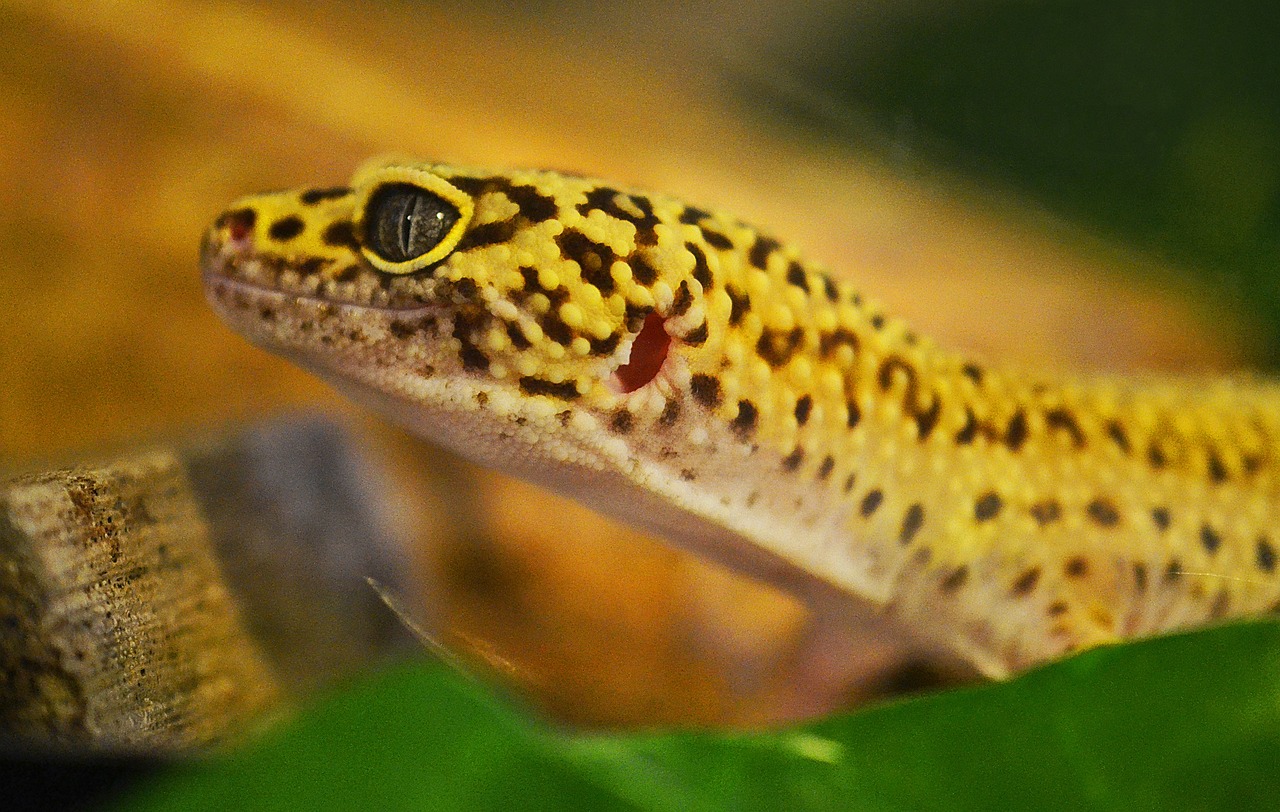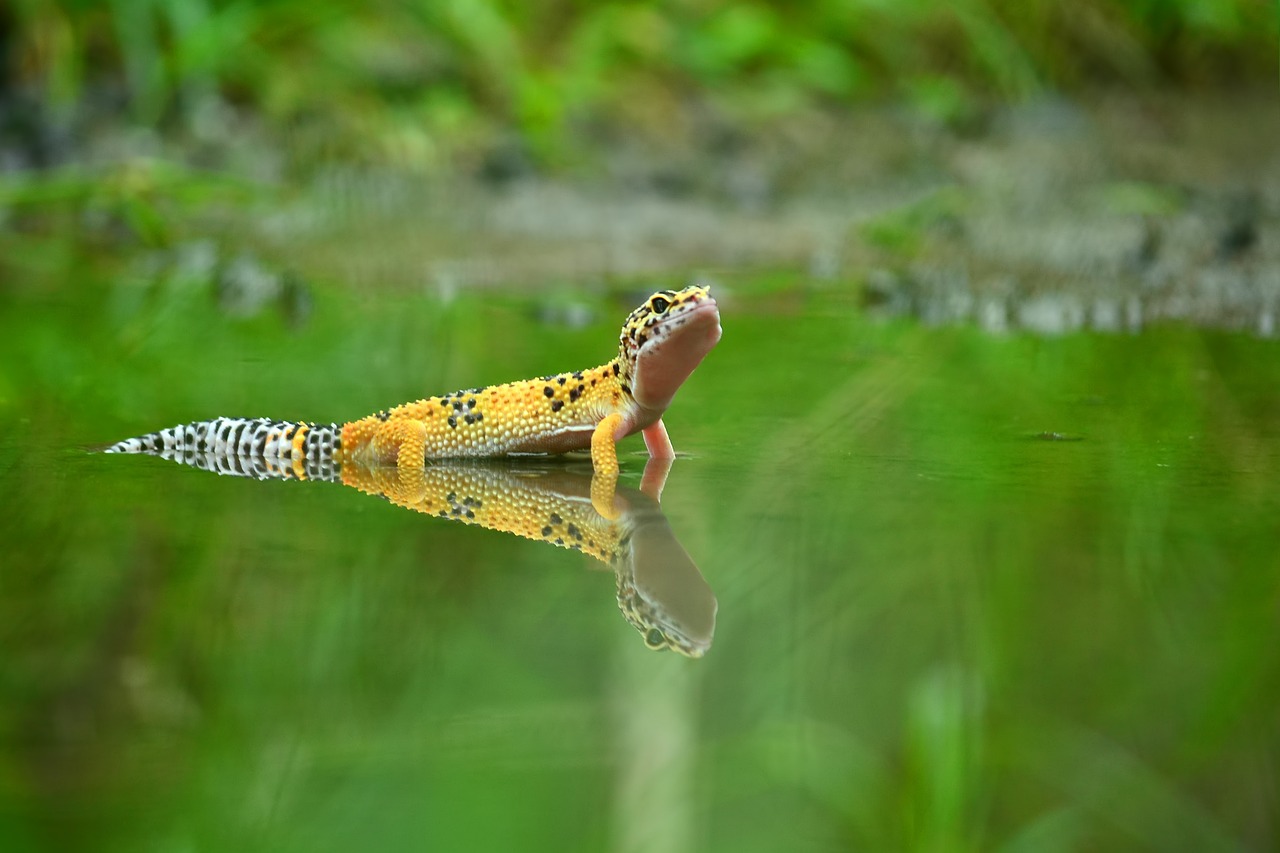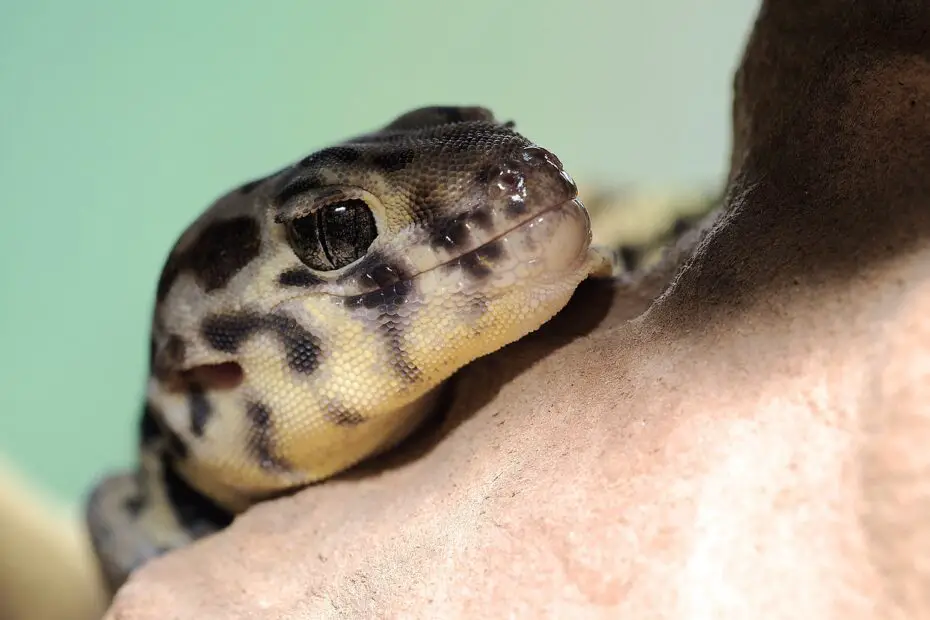Leopard geckos (Eublepharis macularius) are captivating reptiles known for their unique color patterns and docile nature. As responsible pet owners, it’s essential to keep a close eye on our geckos’ health and well-being. One common concern that might arise for leopard gecko owners is when they notice their pet looking pale or experiencing changes in their coloration.
Why does my leopard gecko look pale? In this article, we’ll explore the various reasons why leopard geckos may appear pale and how to address these issues appropriately.
You may also want to know how big a leopard gecko gets.
Understanding Normal Leopard Gecko Coloration
Before diving into potential causes, it’s essential to understand the typical coloration of a healthy leopard gecko. Leopard geckos have a base color that can range from yellow to beige, with distinct dark spots, giving them their characteristic leopard-like appearance. Additionally, their tails store fat and may have a different texture and color compared to the rest of their body.

Why does my leopard gecko look pale?
Several factors can lead to a leopard gecko looking pale, and it’s crucial to consider each possibility carefully. Let’s explore some common reasons for this change in coloration:
3.1. Stress
Leopard geckos can experience stress due to various reasons, such as excessive handling, loud noises, or changes in their environment. Stress can cause them to become pale, lose their appetite, and even become more aggressive.
3.2. Shedding
Like many reptiles, leopard geckos shed their skin periodically. During the shedding process, their new skin underneath may appear lighter and duller, leading to a pale appearance.
3.3. Illness and Parasites
Pale coloration could be a sign of underlying health issues, such as infections or parasitic infestations. In some cases, geckos may also have other symptoms like lethargy and loss of appetite.
3.4. Temperature Issues
Leopard geckos are ectothermic, meaning they rely on external heat sources to regulate their body temperature. If the enclosure’s temperature is too low, it can impact their coloration and overall health.
Assessing Other Symptoms
When observing a pale leopard gecko, it’s essential to look for other signs that may indicate the root cause of the issue. Keep an eye out for changes in behavior, eating habits, and any physical abnormalities.
Addressing Stress-Related Color Changes
If stress is the likely cause of your gecko’s pale coloration, it’s essential to identify and minimize stressors in their environment. Provide hiding spots and ensure a quiet, peaceful atmosphere to help your gecko feel safe.
Aiding the Shedding Process
To assist your gecko during shedding, ensure adequate humidity in their enclosure. A humid hide can be created using moss or damp paper towels, allowing them to remove their old skin more easily.

Dealing with Illness and Parasites
If you suspect illness or parasites, it’s crucial to seek veterinary care promptly. A veterinarian experienced in reptile care can diagnose the issue and recommend appropriate treatment.
Maintaining Proper Temperatures
Maintaining the correct temperature range in the enclosure is vital for your gecko’s health. Use a thermometer to monitor temperatures regularly and provide a warm and cool side within the enclosure.
Providing a Balanced Diet
A well-balanced diet is essential for your gecko’s overall health. Offer appropriately sized insects, such as crickets and mealworms, and consider supplementing with calcium and vitamins as recommended by a reptile veterinarian.
Hydration and Humidity
In addition to a water dish, consider providing a humid hide to aid in shedding. Proper hydration is crucial for your gecko’s health and can also impact their coloration.
Enclosure and Environment
Ensure the enclosure is appropriately sized, has suitable substrate, and offers plenty of hiding spots. The right environment can reduce stress and promote natural behaviors.
Genetics and Color Morphs
Genetics play a significant role in determining a leopard gecko’s coloration. Some morphs may naturally have paler coloration than others, and this can be perfectly normal.
When to Seek Veterinary Care
If your gecko’s pale coloration is accompanied by other concerning symptoms or persists despite your efforts to address the issue, don’t hesitate to seek professional veterinary advice.
Conclusion
Why does my leopard gecko look pale? A pale leopard gecko can be a cause for concern, but with attentive care and a good understanding of the potential causes, you can help your gecko regain its vibrancy and health. Remember to provide a suitable environment, address stress, and seek veterinary care when needed to ensure a happy and thriving gecko companion.
FAQs
1. Can overhandling cause a leopard gecko to turn pale? Overhandling can stress leopard geckos, potentially leading to pale coloration and other health issues. Limit handling to short sessions and provide ample rest for your pet.
2. How long does the shedding process take for leopard geckos? The shedding process usually takes around 1 to 2 weeks from start to finish. However, individual geckos may vary, and some may take longer.
3. Can I use a heating pad to regulate the temperature in my gecko’s enclosure? Yes, a heating pad can be used to provide a warm spot in the enclosure. However, always use a thermostat to control the temperature and prevent overheating.
4. What is the average lifespan of a leopard gecko? With proper care, leopard geckos can live for 10 to 20 years or even longer.
5. Do leopard geckos change color as they age? While leopard geckos don’t change color drastically as they age, some morphs may exhibit slight changes in coloration over time.
